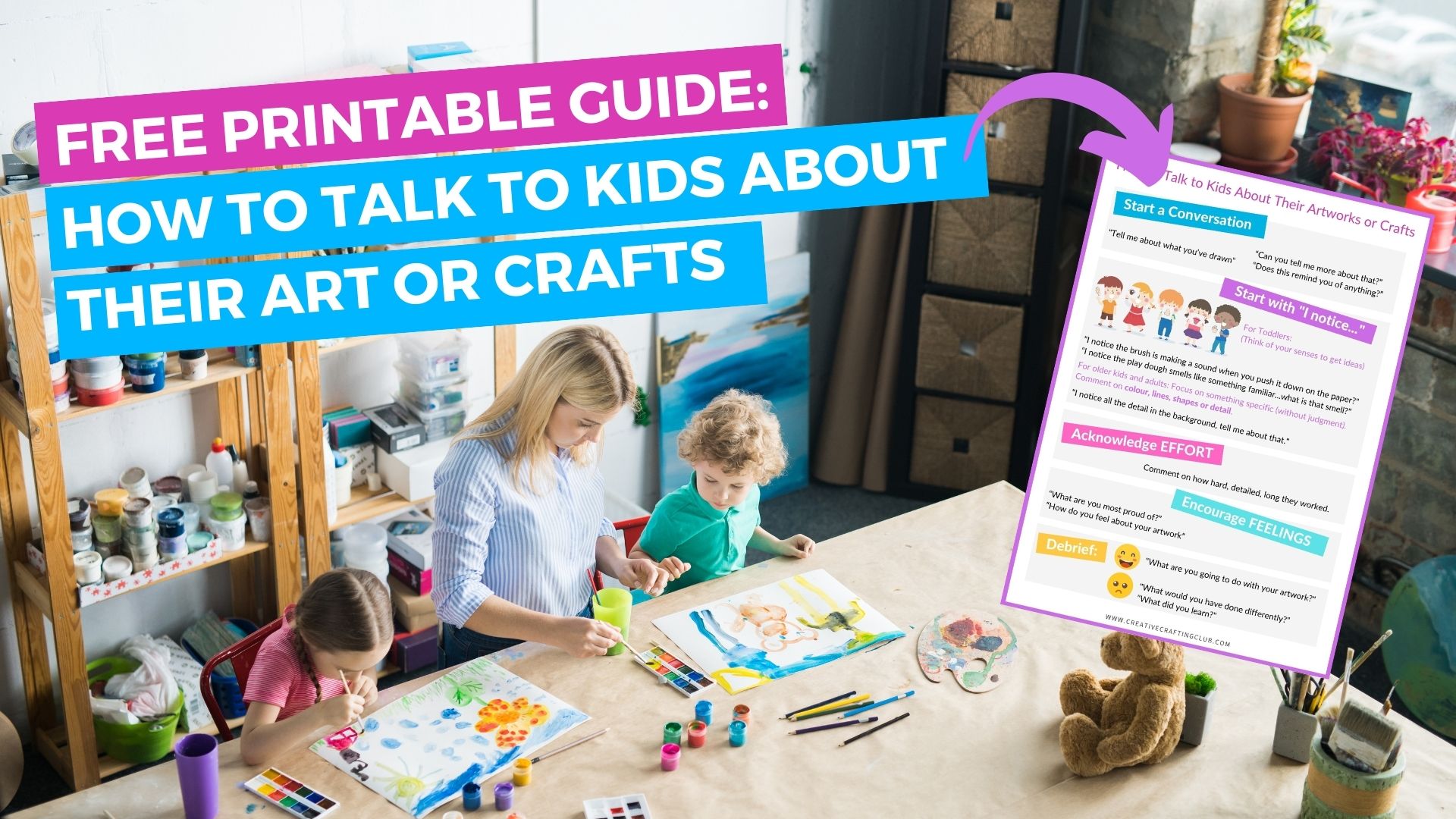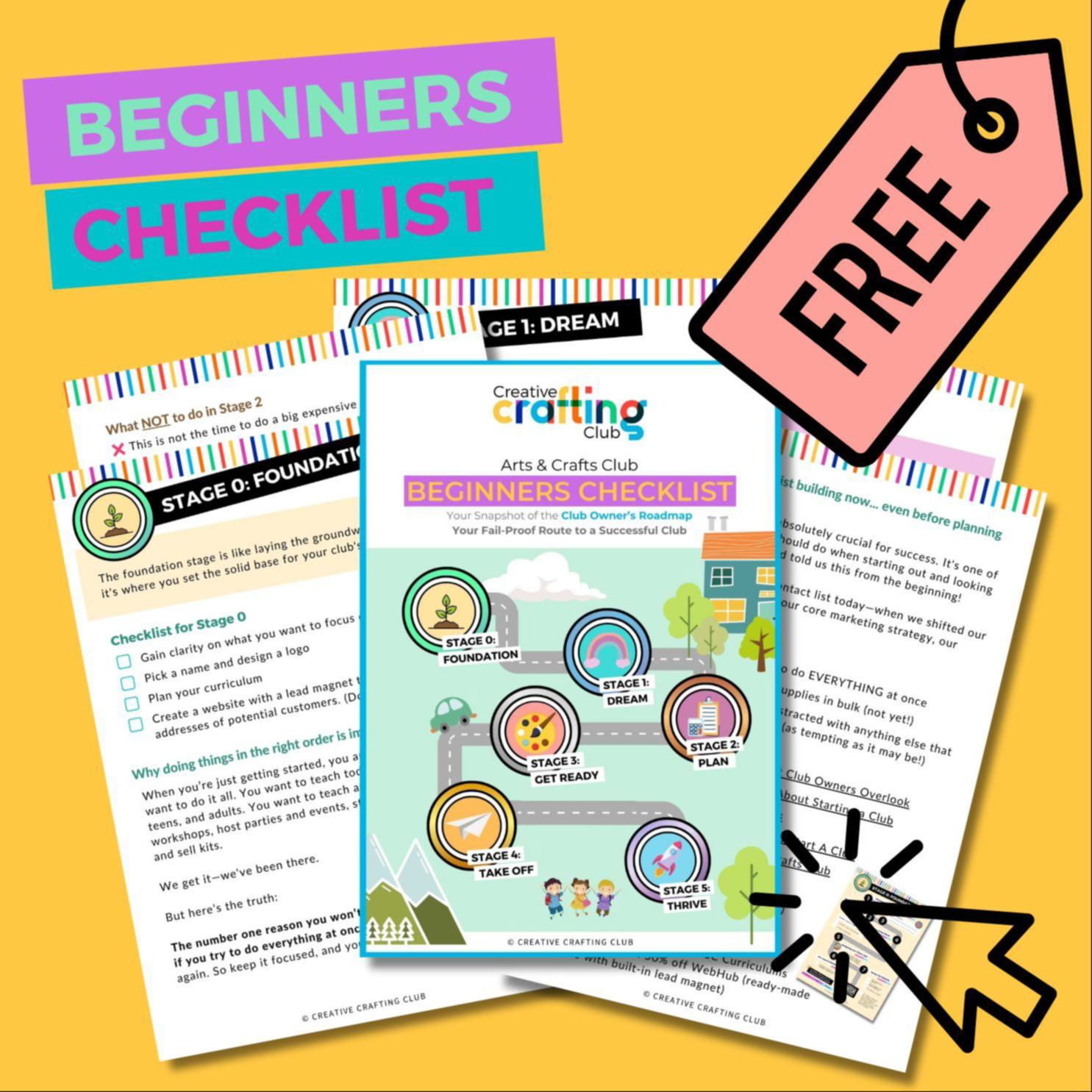How to Talk to Kids About Their Artworks or Crafts (+ FREE Printable Guide!)
Posted on Jun 24, 2021
Have you wondered how to talk to kids about their creations in your arts & crafts class?
Click here to grab our free printable guide to help you know what to say in your next class!
Picture this:
A student walks up to you with a big smile on his face and holds out his artwork.
What would you say?
A first instinct could be to give a generic compliment: “Wow, that's beautiful” or “I love it”.
(Even though you might be thinking: WHAT in the world is that?!)
But here’s the thing:
By continuously praising a child's art with generic comments such as “beautiful”, “wow”, “love that”, can do harm to their self-esteem and confidence.
They may begin to feel self-conscious and experience the expectation to always have to create “beautiful” art, which can build up to a tremendous level of pressure as they get older.
By commenting on their artworks or craft projects in this way we are also ending what could have been a conversation in ONE. SINGLE. COMMENT.
In today’s blog we share 3 easy tips on how to talk to kids in an arts and crafts.
Because using the ‘right’ language can go a long way:
- It helps kids develop mentally, socially, and emotionally,
- It makes them feel GREAT about what they are creating,
- It boosts their self-confidence!
When kids feel that they are able to freely experiment, chat about it and make mistakes they will automatically start inventing new ways of thinking and doing things. They will analyse and problem solve - (hello, real word skills!).
Let's dive in!
Tip 1: Start a conversation
Let’s look at the scenario of responding to a child's art with a generic compliment again.
“Wow, that's beautiful?” or “Look at you, that’s so amazing!”
Just giving an outright compliment, kills the conversation and creates a monologue.
How could we rather respond to create a conversation?
What about, “I see that you used crayons and paint, what did you draw here?”, “Can you tell me more about that?”, “Does this remind you of anything?”.
This will encourage the child to use his or her own words to give you a glimpse into their creative, exploratory and imaginary world.
Kids find stories in a natural way and by asking questions you spark imagination.
No matter the age of the child or what they create, aim to encourage conversation and give them the opportunity to LEAD THE CONVERSATION.
Tip 2: Start with “I notice...”
With toddlers everything is still new. Think of saying things to draw their attention to something that they’ve never noticed before and see how they respond.
Think of your senses to get ideas: What can you hear, see, smell, touch, taste?
This was a dialogue I had in one of our toddler classes:
“I notice the brush is making a sound when you push it down on the paper?"
Ella looked up, and then pushed the brush down again, and again.
“I notice the play dough smells like something familiar, what is that smell?”
Mmm all the kids smelled... and then little voices shouted out:
“It smells like cupcakes!”, “sweeties!”, “ice cream!”, “mommy's hair!”.
For older kids and adults, starting a sentence with “I notice” will encourage you to genuinely look at their work and focus on something specific, without judgment.
Comment on colour, lines, shapes or detail.
Be specific with your comment, not only is this positive affirmation, this will also encourage them to add more detail and dive deeper into their creative endeavour.
What about, “I notice that you created polka dots on his shirt, how did you do that?” or “I notice a castle in the background, tell me about your artwork, who lives in the castle?”.
Tip 3: Acknowledge EFFORT and then encourage FEELINGS
Let’s face it, we all need validation and acknowledgement, and it's wonderful to give children positive feedback.
However, letting kids identify feelings themselves could give deeper insight and pride. This is so important for self-confidence, instead of just relying solely on the affirmation of others!
Set a positive tone by acknowledging effort (not the actual artwork) by commenting on how hard, detailed, long they worked on it.
This will encourage positive thoughts and highlight how far they have come in terms of effort.
Now encourage feelings by asking them “what are you most proud of?”, “how do you feel about your artwork”
You could also do a quick debrief:
If the child feels proud, (and it’s ok if that’s not always the case - that’s human), ask what they plan to do with it:
Will it be a gift? Will it go on the bedroom wall? Are you thinking of getting it framed?
If the child does not feel proud, or feels they made a mistake somewhere, chat about what they would have done differently and what the learnings were.
Further to teaching a child that mistakes/disappointments are part of life, you can help a child learn to celebrate the mistake and the process of learning from mistakes and turn it into an exciting adventure, rather than a failure.
"So, you spilled a few drops of paint on the page... mmm... I wonder what it can become?"
So to wrap up, let's do a quick recap on how to talk to kids about their artworks and crafts in a class:
- Start a conversation
- Start with “I notice...”
- Acknowledge EFFORT and then encourage FEELINGS
We hope you find today’s blog helpful!
To help you remember these easy tips, we've created a handy FREE printable for you. Click here to download the free guide.
Click here to grab your free printable!
With love,
Christelle & Stefanie
XO
P.S. Are you ready to start your own arts & crafts club?
Our CCC Academy will provide you with all the training, resources and support you need to go from dreaming to thriving with your club.
Click here to join the waitlist and receive a free info pack.





